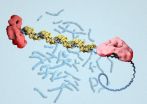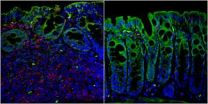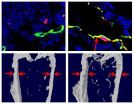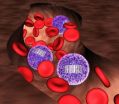Kids' oral language skills can predict future writing difficulties
2014-10-06
(Press-News.org) Children's future writing difficulties can be identified before they even learn how to begin writing, according to a new study by Professor Phaedra Royle and Postdoctoral fellow Alexandra Marquis of the University of Montreal's School of Speech Language Pathology and Audiology. The researchers are interested in oral language skills and their impact on grammar and spelling learning. Their work shows that oral language is a good predictor of writing difficulties. "The more children are able to use verb tense in spoken language, the more easily they can learn written language," explained Professor Royle. On a different note, the research data also contradicts the popular belief that bilingualism at an early age can be detrimental to oral and written language learning.
71 children aged six to nine years participated in Marquis and Royle's study on the relationship between oral and written language skills (e.g., children's ability to orally conjugate verbs in the past tense or to use auxiliaries and other grammatical elements in writing). Of these children, 38 were unilingual French-speaking and 33 were multilingual, with French being their second or third language. All attended French-language schools. They were initially evaluated in first grade, by having their oral ability in verb conjugation measured. Then, at the end of second grade, the children's written skills were tested – they were given a multiple choice morphosyntactic task (e.g., asking them to chose the right spelling between a, à and as in a sentence such as Paul a une amie 'Paul has a friend') and underwent a standardized dictation test. Morphosyntax is a linguistic term related to word grammar
Results of Royle and Marquis' study indicate that first grade oral skills were predictive of second grade writing skills one year later. More specifically, morphological awareness in spoken language (in which the child is able to manipulate the parts of a word and understand the rules of word formation) can predict possible spelling and grammar difficulties in written language. Morphology refers to the individual pieces of a word, or morphemes, that have meaning. For example, the two morphemes "dog" and "–s" in "dogs" mean more than one dog. Syntax refers to the way we construct whole sentences.."Our data reveal links between oral and written morphosyntactic skills for both groups of children," Royle said. "Our findings also show that unilingual French-speaking children have an advantage in terms of spoken language because they constantly use French. But in terms of written language, the two groups showed no significant differences."
This is the first study in French in which children's morphosyntactic abilities were measured before they were able to write. "Language difficulties must identified early on in school to develop appropriate pedagogical approaches and prevent students from having to cope with failure," Marquis said.
Testing in Quebec French
Marquis' postdoctoral research focuses at knowledge of French verb morphology from birth to school age. "Babies are sensitive to speech sounds at an early age," she explained. "They can even recognize verb endings at 11 months!" Few studies have focused on pre-school children's sensitivity to the morphological structure of oral language and its predictive nature for written language. In fact, only one study was found in the scientific literature on the subject – it looked at learning Hebrew. "Researchers focus more on phoneme, syllable, and semantic knowledge... These skills are essential for reading and writing learning. However, emphasizing morphology and its relationship to written language may optimize the development of skills related to spelling and grammar in children," Marquis said. The approach seems especially suitable for children who have problems with the internal structure of words, as is the case with dysphasia or aphasia.
Marquis and Royle's work could have significant impact in education and intervention for children with language disorders. It is already part of an oral language test specific to Quebec French for detecting spelling difficulties in children which was developed by Drs Rvachew, Gonnerman and Royle (Prédiction des habiletés orthographiques par des habiletés de langage oral (PHOPHLO), from McGiil University and the Université de Montréal.
INFORMATION:
The research was presented at the International Conference on the Acquisition of Romance Languages in Palma, Spain on September 18, 2014. Researchers were unable for interview before October 6, 2014. The study was funded by Fonds de recherche du Québec - Société et culture, Actions concertées (2011-ER-144359). The University of Montreal is officially known as Université de Montréal.
ELSE PRESS RELEASES FROM THIS DATE:
2014-10-06
Researchers from UCL, Stanford Engineering, Google, Chalmers and Mozilla Research have built a new system that protects Internet users' privacy whilst increasing the flexibility for web developers to build web applications that combine data from different web sites, dramatically improving the safety of surfing the web.
The system, 'Confinement with Origin Web Labels,' or COWL, works with Mozilla's Firefox and the open-source version of Google's Chrome web browsers and prevents malicious code in a web site from leaking sensitive information to unauthorised parties, whilst ...
2014-10-05
Scientists have taken pictures of the BRCA2 protein for the first time, showing how it works to repair damaged DNA.
Mutations in the gene that encodes BRCA2 are well known for raising the risk of breast cancer and other cancers. Although the protein was known to be involved in DNA repair, its shape and mechanism have been unclear, making it impossible to target with therapies.
Researchers at Imperial College London and the Cancer Research UK London Research Institute purified the protein and used electron microscopy to reveal its structure and how it interacts with ...
2014-10-05
An international collaboration of scientists has identified a fifth of the genetic factors that cause height to vary between individuals.
A study which examined data on DNA from more than 250,000 people, published on October 6 in Nature Genetics, roughly doubles the number of known genome regions involved in height to more than 400. It also revealed that more than half of the factors involved in determining height are explained by simple common genetic variation - the sort of genetic variation that exists in more than 1 in 10 people.
The collaboration, co led by the ...
2014-10-05
Researchers at University of California, San Diego School of Medicine have discovered that T-cells – a type of white blood cell that learns to recognize and attack microbial pathogens – are activated by a pain receptor.
The study, reported online Oct. 5 in Nature Immunology, shows that the receptor helps regulate intestinal inflammation in mice and that its activity can be manipulated, offering a potential new target for treating certain autoimmune disorders, such as Crohn's disease and possibly multiple sclerosis.
"We have a new way to regulate T-cell activation ...
2014-10-05
Experiments in mice with a bone disorder similar to that in women after menopause show that a scientifically overlooked group of cells are likely crucial to the process of bone loss caused by the disorder, according to Johns Hopkins researchers. Their discovery, they say, not only raises the research profile of the cells, called preosteoclasts, but also explains the success and activity of an experimental osteoporosis drug with promising results in phase III clinical trials.
A summary of their work will be published on Oct. 5 in the journal Nature Medicine.
"We didn't ...
2014-10-05
The largest genome-wide association study (GWAS) to date, involving more than 300 institutions and more than 250,000 subjects, roughly doubles the number of known gene regions influencing height to more than 400. The study, from the international Genetic Investigation of Anthropometric Traits (GIANT) Consortium, provides a better glimpse at the biology of height and offers a model for investigating traits and diseases caused by many common gene changes acting together. Findings were published online October 5 by Nature Genetics.
"Height is almost completely determined ...
2014-10-05
A 7-year-project to develop a barcoding and tracking system for tissue stem cells has revealed previously unrecognized features of normal blood production: New data from Harvard Stem Cell Institute scientists at Boston Children's Hospital suggests, surprisingly, that the billions of blood cells that we produce each day are made not by blood stem cells, but rather their less pluripotent descendants, called progenitor cells. The researchers hypothesize that blood comes from stable populations of different long-lived progenitor cells that are responsible for giving rise to ...
2014-10-05
This news release is available in French and German. Physicians and researchers at CHU Sainte-Justine, Université de Montréal, CHU de Québec, Université Laval, and Hubrecht Institute have discovered a rare disease affecting both heart rate and intestinal movements. The disease, which has been named "Chronic Atrial Intestinal Dysrhythmia syndrome" (CAID), is a serious condition caused by a rare genetic mutation. This finding demonstrates that heart and guts rhythmic contractions are closely linked by a single gene in the human body, as shown in a study published on October ...
2014-10-05
A new crystallographic technique developed at the University of Leeds is set to transform scientists' ability to observe how molecules work.
A research paper, published in the journal Nature Methods on October 5, describes a new way of doing time-resolved crystallography, a method that researchers use to observe changes within the structure of molecules.
Although fast time-resolved crystallography (Laue crystallography) has previously been possible, it has required advanced instrumentation that is only available at three sites worldwide. Only a handful of proteins ...
2014-10-05
A study published in Nature Geoscience shows that air pollution has had a significant impact on the amount of water flowing through many rivers in the northern hemisphere.
The paper shows how such pollution, known as aerosols, can have an impact on the natural environment and highlights the importance of considering these factors in assessments of future climate change.
The research resulted from a collaboration between scientists at the Met Office, Centre for Ecology and Hydrology, University of Reading, Laboratoire de Météorologie Dynamique in France, and the University ...
LAST 30 PRESS RELEASES:
[Press-News.org] Kids' oral language skills can predict future writing difficulties



